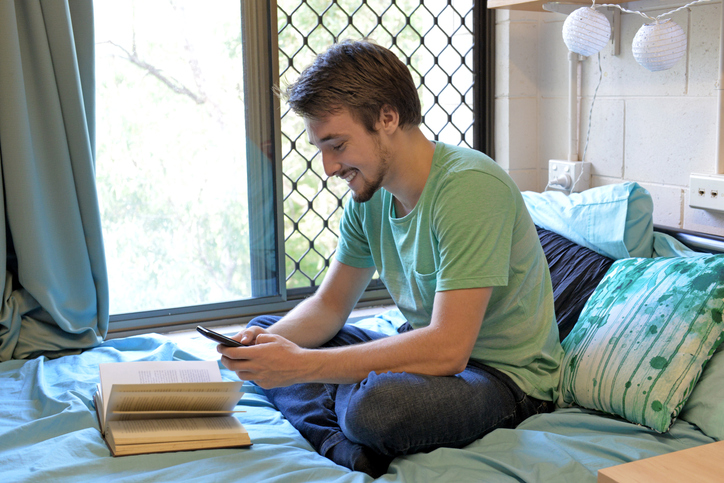By: Emily Deanne
Over the last few years, we have seen millions of young people join the global youth climate movement and advocate for solutions to the climate crisis.
If you’re a college student headed back to campus and you’re looking for ways to reduce your environmental impact, consider giving your dorm room an “energy-efficiency makeover.”
Since residential energy use accounts for about 20 percent of greenhouse gas emissions – even if just one in ten students adopted energy-saving practices in the dorm rooms they call home, it could make a big difference in reducing climate-warming carbon pollution.
For Energy Efficiency Day this year, take the challenge to green your college dorm room. Use this checklist:
Keep Your Cool
Air-conditioning packs a big punch for dorm power usage. Residential and commercial cooling alone accounted for 10 percent of total U.S. electricity consumption in 2021. If your room has individual temperature control, you can set it a few degrees higher to help cut back on how much energy the cooling system uses. Never leave a window open when an air conditioner (or heater) is running; and on hot, sunny days, keeping the blinds or curtains closed will block many of the sun’s warming rays. In the winter, this will help keep the cold out, too.
A fan can make a room feel ten degrees cooler and uses only ten percent of the energy as compared to a traditional air conditioner. Instead of cranking up the AC, switch on the fan and you could be just as comfortable.
Year-round, report broken windows, cracks in doorways, or any damaged thermostat controls to the university maintenance department.
Unplug Everything
The average dorm room consumes 30.2 percent of its electrical energy while you and your roomies aren’t there, according to one study. That’s because appliances continue to draw power from electrical outlets even when turned off or idle.
The Department of Energy found that in the average dwelling, 75 percent of all electricity used to power electronics is consumed after the products are turned off. A power strip or surge protector helps avoid this: You can plug all your appliances and devices into it, then easily flip one switch to stop them from drawing power.
Don’t Make Your Screens Work Too Hard
If you have a television, look for an energy-saving feature called Automatic Brightness Control. It adjusts the picture brightness level to the amount of light in the room.
Game consoles can be huge energy drainers if used to stream videos or if constantly left on. Instead, stream with apps already on your TV or with a streaming device (like Roku or Apple TV), which require one-fifteenth of the energy. Keep the auto-power-down feature enabled so your console doesn’t consume power unless you are actually using it.
Computers are college necessities, and as with your gaming console, you can typically program your computer to go into a low-power standby mode when you’re taking a break. Look for an energy-saving or eco-mode.
Shopping for a new computer? Check out this website to find one certified by Energy Star to be efficient.
Buy Smart
Thinking about buying a toaster, printer, mini-fridge, or microwave? Before you purchase one of these classic dorm room appliances: make sure you are buying an Energy Star option. That means it meets strict energy-efficiency specifications and uses less energy than other models. Doing so ensures that the appliance you bring will not be needlessly wasting energy.
Instead of bringing a hot plate to cook on (if your school allows it) bring a portable induction cooktop burner. Induction cooktops run on electricity and use magnetic waves to heat pots directly, making them by far the most efficient cooktop.
Reduce Water Use
If you have a dishwasher in your room or suite, run it only with a full load; the same goes for doing laundry. Wash clothes in cold water and consider using a drying rack instead of an electric clothes dryer, which often uses as much energy as a new refrigerator, dishwasher, and clothes washer combined. Also, using cold water and air drying means you will be less likely to shrink or discolor your clothes if this is your first time doing laundry away from home!
If you live in an apartment-style dorm, add a faucet aerator to your sink. Aerators can reduce water flow to 1.5 gallons per minute or less from the standard flow of 2.2 gallons per minute. They are inexpensive and easy to screw onto the nozzle of your faucet, and they save energy by reducing your hot water use.
Finally, get your college to join in on Energy Efficiency Day 2022 by asking them to issue a proclamation. You can find all the resources you need in this helpful tool kit: https://energyefficiencyday.org/proclamations/.


Recent Comments